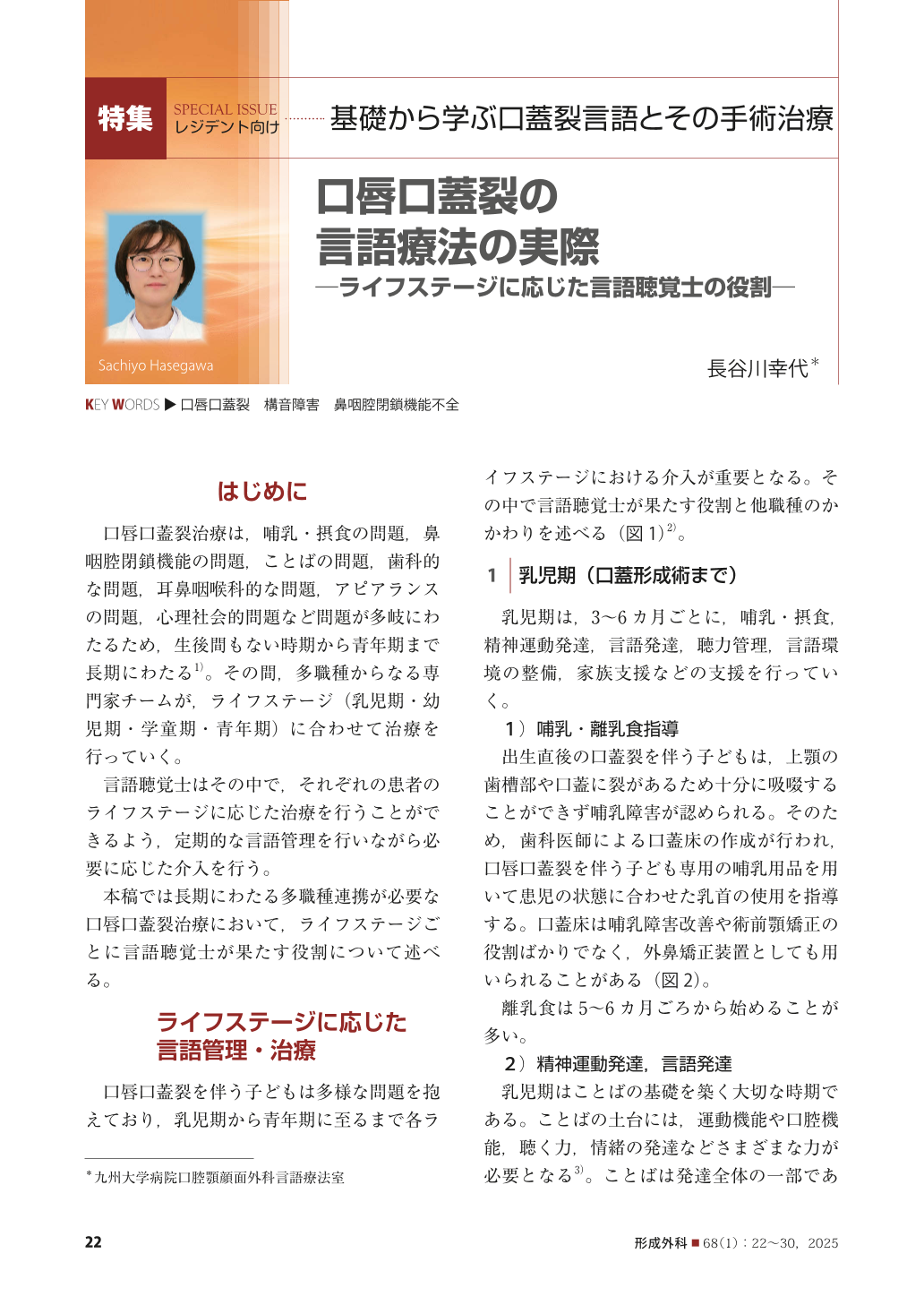Japanese
English
- 有料閲覧
- Abstract 文献概要
- 1ページ目 Look Inside
- 参考文献 Reference
はじめに
口唇口蓋裂治療は,哺乳・摂食の問題,鼻咽腔閉鎖機能の問題,ことばの問題,歯科的な問題,耳鼻咽喉科的な問題,アピアランスの問題,心理社会的問題など問題が多岐にわたるため,生後間もない時期から青年期まで長期にわたる 1)。その間,多職種からなる専門家チームが,ライフステージ(乳児期・幼児期・学童期・青年期)に合わせて治療を行っていく。
言語聴覚士はその中で,それぞれの患者のライフステージに応じた治療を行うことができるよう,定期的な言語管理を行いながら必要に応じた介入を行う。
本稿では長期にわたる多職種連携が必要な口唇口蓋裂治療において,ライフステージごとに言語聴覚士が果たす役割について述べる。
Speech therapists play a crucial role in the treatment of individuals with cleft lip and palate by providing necessary language assessment, guidance, and support tailored to each life stage. During infancy, speech therapists focus on feeding guidance, family support, hearing management, and improvement of the language environment. After a palatoplasty is performed for a patient at the early toddler stage, the primary goals are to develop velopharyngeal closure function, promote language development, and increase the number and variety of consonants. As children enter the late toddler stage, speech therapists evaluate and treat velopharyngeal function and articulation and provide training as needed. This stage also marks the beginning of self-awareness in children, prompting therapists to support families to address this developmental milestone. For school-aged children and beyond, treatment continues if velopharyngeal insufficiency or articulation disorders persist. Speech therapists also consider the changes resulting from orthodontic treatment, natural growth, and surgical orthodontics. Throughout this process, they work collaboratively with other specialists to ensure that children and their families receive the necessary treatments at appropriate times, supporting them until the completion of comprehensive, multidisciplinary care.

Copyright© 2025 KOKUSEIDO CO., LTD. All Rights Reserved.


